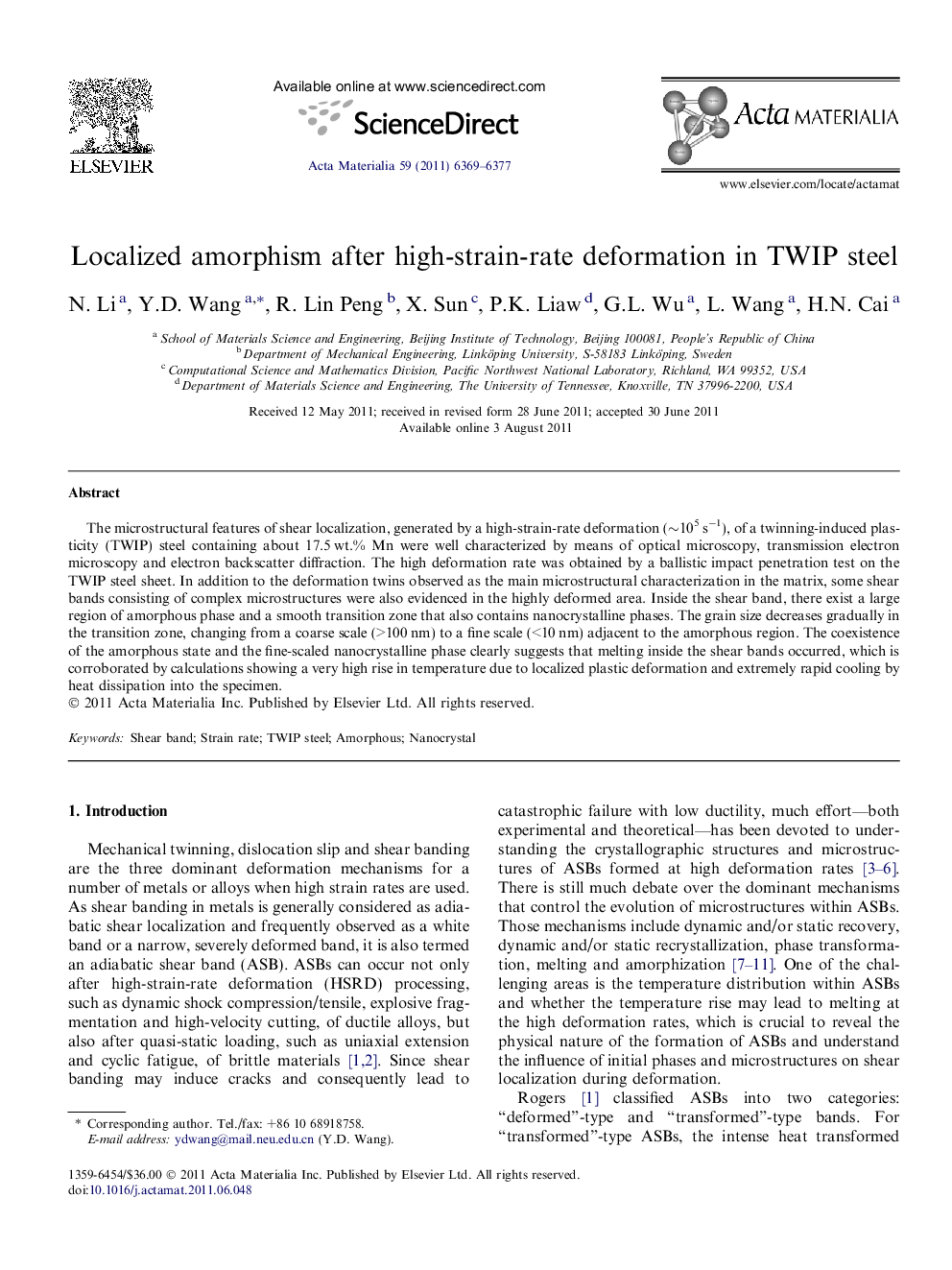| Article ID | Journal | Published Year | Pages | File Type |
|---|---|---|---|---|
| 10620572 | Acta Materialia | 2011 | 9 Pages |
Abstract
The microstructural features of shear localization, generated by a high-strain-rate deformation (â¼105Â sâ1), of a twinning-induced plasticity (TWIP) steel containing about 17.5Â wt.% Mn were well characterized by means of optical microscopy, transmission electron microscopy and electron backscatter diffraction. The high deformation rate was obtained by a ballistic impact penetration test on the TWIP steel sheet. In addition to the deformation twins observed as the main microstructural characterization in the matrix, some shear bands consisting of complex microstructures were also evidenced in the highly deformed area. Inside the shear band, there exist a large region of amorphous phase and a smooth transition zone that also contains nanocrystalline phases. The grain size decreases gradually in the transition zone, changing from a coarse scale (>100Â nm) to a fine scale (<10Â nm) adjacent to the amorphous region. The coexistence of the amorphous state and the fine-scaled nanocrystalline phase clearly suggests that melting inside the shear bands occurred, which is corroborated by calculations showing a very high rise in temperature due to localized plastic deformation and extremely rapid cooling by heat dissipation into the specimen.
Related Topics
Physical Sciences and Engineering
Materials Science
Ceramics and Composites
Authors
N. Li, Y.D. Wang, R. Lin Peng, X. Sun, P.K. Liaw, G.L. Wu, L. Wang, H.N. Cai,
